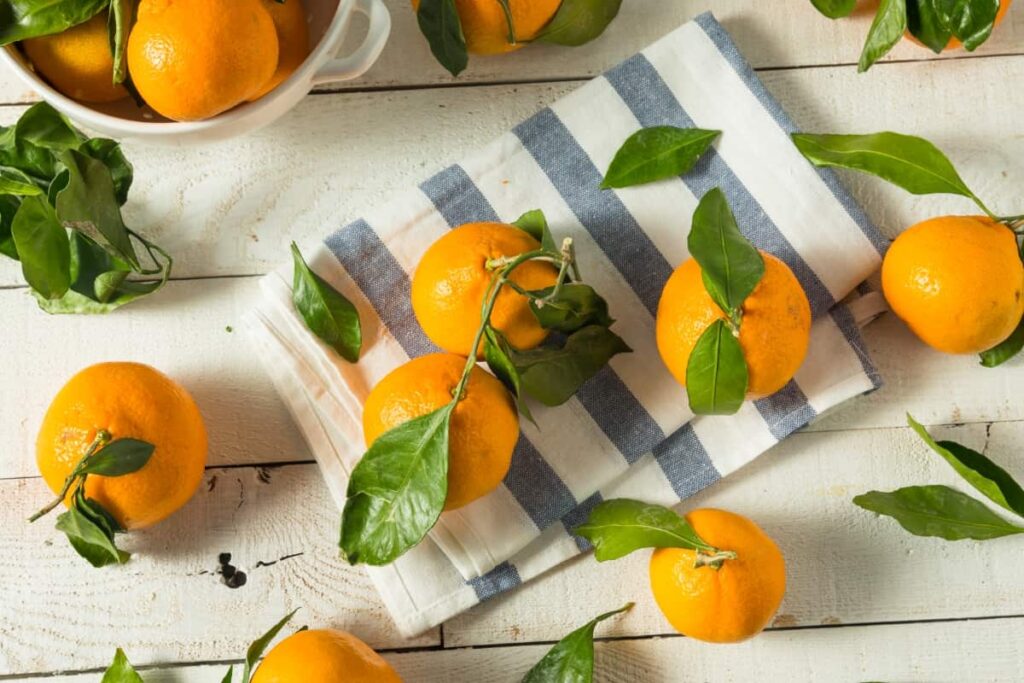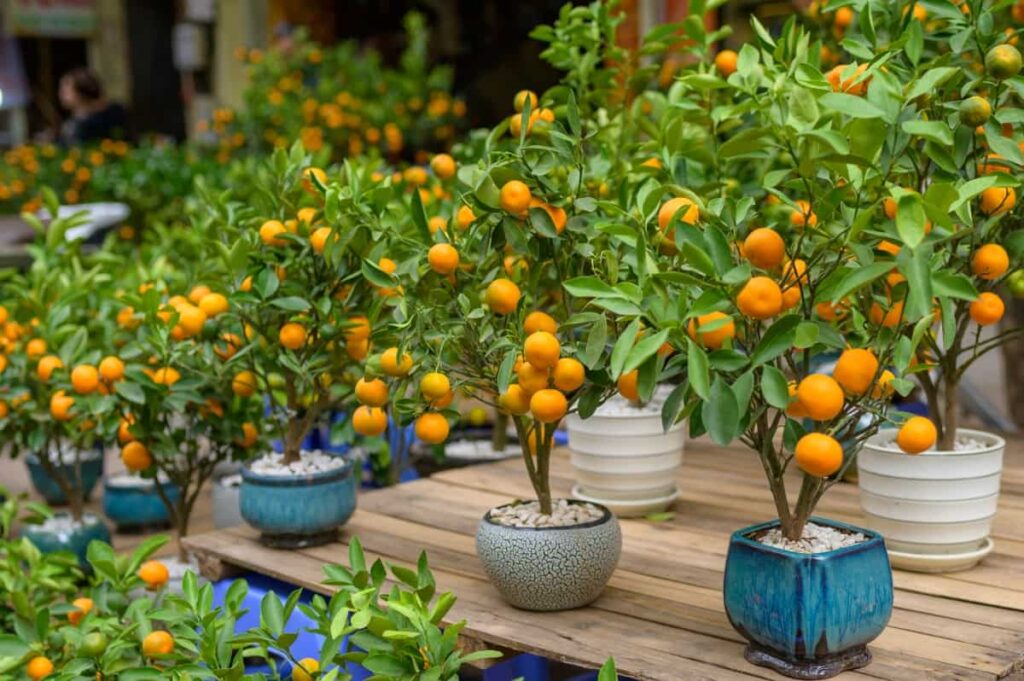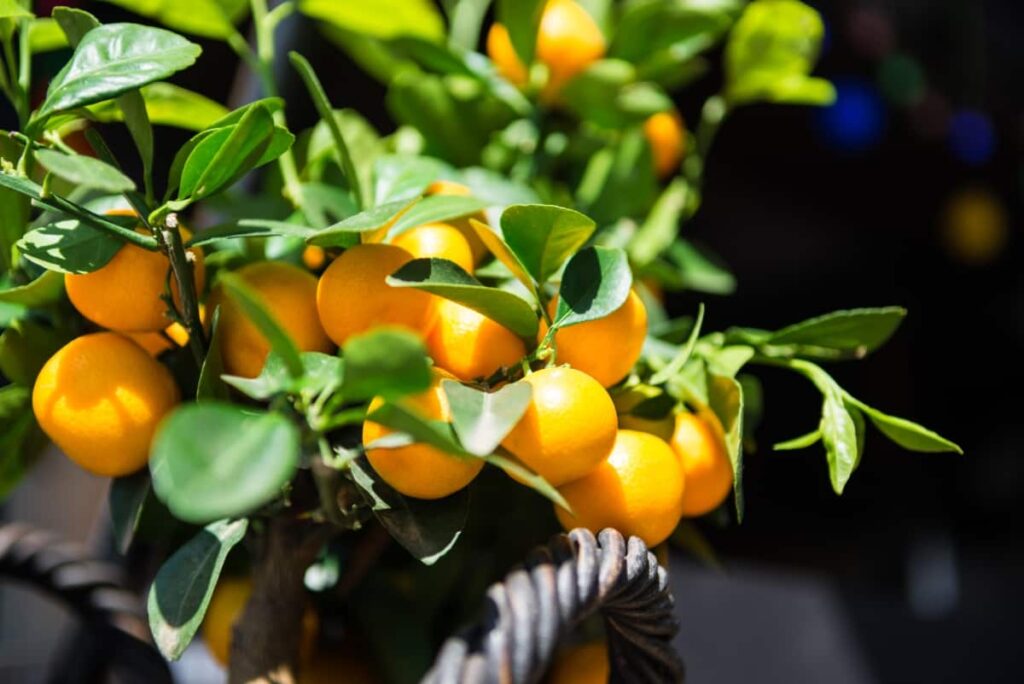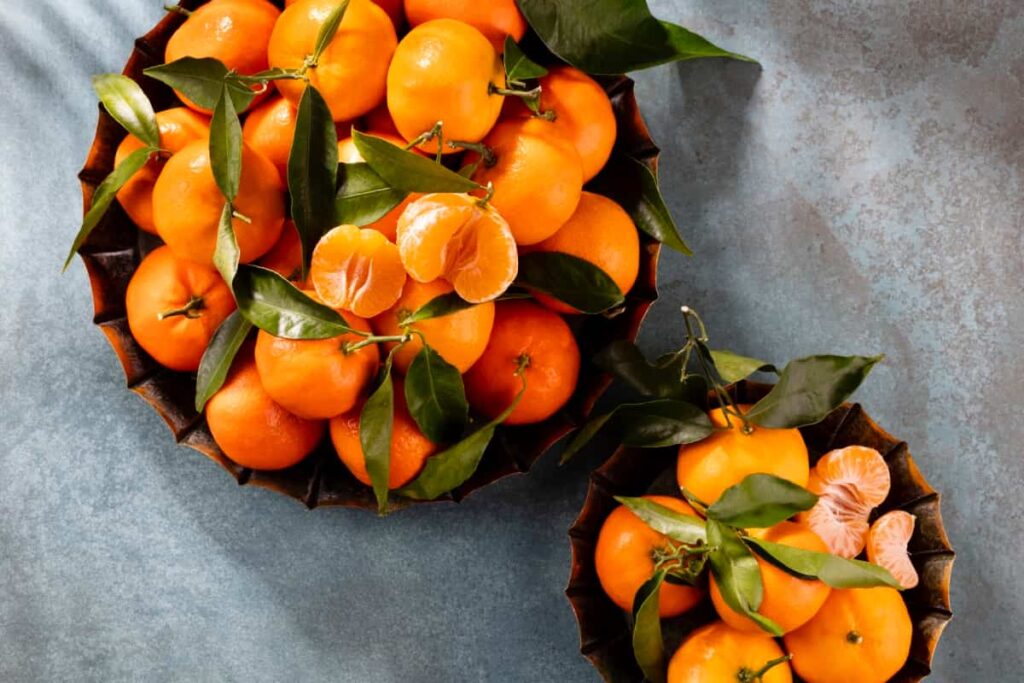Owari Satsuma Mandarins are a popular and delicious citrus known for their sweet, seedless fruit and easy-to-grow nature. By cultivating these citrus gems in containers, you can enjoy fresh, homegrown mandarins even if you have limited space or live in an area with challenging growing conditions.

This step-by-step guide is designed to provide beginners with the essential information and guidance needed to grow Owari Satsuma Mandarins in pots successfully. From selecting the right pot and soil mix to caring for your mandarin tree throughout its growth, this guide will cover every aspect of the process.
How to Grow Owari Satsuma Mandarin in Pots:A Step-By-Step Guide
Best Pot Sizes and Types for Thriving Owari Satsuma Mandarin Trees
Choose a container with at least 18-24-inch diameter and 18-inch depth to allow proper root development. This ensures sufficient space for the roots to spread and support the tree’s growth. Containers made of lightweight, durable materials such as plastic or fiberglass are the best pots for Owari Satsuma mandarins, as they are easier to move and provide insulation against temperature fluctuations. The chosen pot should have adequate drainage holes to avoid waterlogging, promote aeration, and prevent root rot.
Optimal Soil Mixtures for Container-Grown Owari Satsuma Mandarins
Create an optimal soil mixture for growing Owari Satsuma in containers by combining equal parts of well-draining potting mix, perlite, and coconut coir. This blend provides a balanced environment that promotes healthy root development and moisture retention while preventing waterlogging. The soil mix for potted Owari Satsuma ensures adequate nutrient content, while perlite enhances aeration and drainage, preventing compaction.
Coconut coir contributes to moisture retention and has a sustainable, eco-friendly nature. Also, incorporate a slow-release citrus fertilizer into the mix to provide essential nutrients throughout the growing season. Regularly check the soil’s moisture levels, ensuring it stays consistently moist but not waterlogged. This well-balanced soil mixture supports the specific needs of Owari Satsuma Mandarins in containers, fostering optimal growth and fruit production.
Watering and Feeding Tips for Growing Owari Satsuma In Containers
Watering and feeding are critical for the success of Owari Satsuma Mandarins in pots. As the standard practice of watering Owari Satsuma mandarins in pots, Water the tree deeply when the topsoil feels dry, typically requiring more frequent watering in hot weather. Ensure proper drainage to prevent waterlogging. Place a saucer beneath the container to catch excess water, but avoid letting the roots sit in standing water.
During the growing season (spring through early fall), fertilize with a balanced, slow-release citrus fertilizer according to package instructions. Provide additional nutrients if yellowing leaves or slow growth occurs. Adjust feeding frequency based on the tree’s response. Mulch the soil surface to retain moisture. Regularly monitor soil moisture and adjust watering and feeding accordingly to maintain optimal conditions for the Owari Satsuma Mandarin in its container.
Pruning Container Owari Satsuma Trees
- Size Control: Mandarins can become leggy; prune to control height and width, ensuring the tree remains suitable for the container.
- Dead Wood Removal: Regularly remove dead, damaged, or diseased branches to maintain a healthy tree.
- Thinning: Thin out crowded branches to improve air circulation and sunlight penetration, reducing the risk of diseases.
- Heading Back: Use heading back cuts to encourage bushier growth and promote branching.
- Selective Pruning: Identify and remove branches that cross each other to prevent rubbing and potential damage.
- Seasonal Pruning: Conduct major pruning during the dormancy period (late winter to early spring) to minimize stress on the tree.
- Fruit Thinning: Thin out excess fruit to ensure larger, high-quality fruit and prevent branch breakage due to heavy loads.
In case you missed it: 20 Steps to Grow Mandarin Oranges in Season from Seeds, Fruit, indoors, and Pots

Best Fertilizer for Owari Satsuma Mandarins in Pots
For Owari Satsuma Mandarins in pots, use a balanced, slow-release fertilizer with micronutrients. Apply in early spring and midsummer, avoiding fertilization during late summer to prevent tender growth before winter. Use a citrus-specific fertilizer or one with an NPK ratio of around 10-10-10. Apply 1/4 – 1/2 cup per container, adjusting based on pot size. Water thoroughly after fertilizing to prevent root burn. Aim for 2-3 applications per year. Monitor the plant’s response and adjust quantities accordingly. Additionally, incorporate organic matter into the soil annually.
Preventing Common Pests and Diseases in Potted Owari Satsuma Mandarins
Preventing pests and diseases in potted Owari Satsuma Mandarins requires a combination of organic and chemical measures. For organic pest control, introduce beneficial insects like ladybugs or lacewings to combat aphids and mites naturally. Neem oil, a botanical extract, serves as an effective organic pesticide against various pests and has antifungal properties. Regularly inspect the Owari Satsuma Mandarin trees for signs of pests, removing affected leaves or branches promptly.
Horticultural oils or Insecticidal soaps should be used cautiously for specific pest issues. Follow label instructions carefully, apply during recommended times, and avoid harm to beneficial insects. Copper-based fungicides can help prevent fungal diseases. Maintain proper spacing between plants for air circulation and ensure well-draining soil to prevent root diseases. Regularly monitor your potted Satsuma Mandarin, combining both organic and chemical solutions judiciously for an integrated and effective pest and disease management strategy.
Winter Care for Potted Owari Satsuma
- Protecting from Frost: Move indoors or to a sheltered area during freezing temperatures.
- Mulching: Apply an organic mulch around the tree’s base to insulate roots and retain moisture.
- Reducing Watering: Adjust watering frequency, allowing the soil to dry slightly between waterings.
- Avoiding Fertilization: Refrain from fertilizing during winter to prevent new growth that may be susceptible to cold damage.
- Monitoring Indoor Conditions: If kept indoors, ensure adequate light exposure and humidity levels. Regularly check for pests.
In case you missed it: Orange Cultivation Information Guide

Balcony Gardening Owari Satsuma Mandarins: Growing Owari Satsuma Mandarins in Small Spaces
Balcony gardening with Owari Satsuma Mandarins in small spaces can be rewarding. Opt for a large container with well-draining soil, at least 18-24 inches in diameter. Choose a dwarf variety suitable for confined spaces. Ensure the container has drainage holes to avoid waterlogging. Place the container in a sunny spot, providing at least 8 hours of sunlight daily. Regularly water the mandarin tree, allowing the top inch of soil to dry between waterings.
Use a balanced, slow-release citrus fertilizer during the growing season. Prune to maintain size and shape, and remove dead wood for optimal growth. Consider vertical gardening or tiered shelving for space optimization. Monitor for pests and diseases, applying organic solutions when needed. Balcony gardening with Owari Satsuma Mandarins brings fresh citrus to small spaces, enhancing aesthetics and providing a homegrown, flavorful harvest.
Troubleshooting Common Problems in Potted Owari Satsuma Mandarin Trees
- Yellowing leaves may indicate nutrient deficiency or overwatering; adjust fertilization and drainage accordingly.
- If leaves curl or exhibit distorted growth, inspect for pests like thrips, spider mites, and aphids. Treat them with insecticidal soap or else neem oil.
- Browning or dropping leaves might result from underwatering or insufficient humidity. Ensure proper watering and consider misting the foliage.
- If mold or mildew appears, improve air circulation and use fungicidal sprays.
- Watch for signs of root rot, adjust watering practices, and ensure well-draining soil.
- If growth is stunted, review fertilization and light exposure.
- Regularly inspect for pests, diseases, and environmental factors to promptly identify and resolve issues, promoting the health and productivity of your potted Owari Satsuma Mandarin tree.
In case you missed it: High Yield Hybrid Lemon Varieties in India

Conclusion
In conclusion, growing Owari Satsuma Mandarins in pots can be a fulfilling venture for beginners. With attention to container size, soil mix, watering, and fertilization, even those with limited space can enjoy the beauty and bounty of citrus trees. Regular monitoring, prudent pruning, and addressing issues promptly contribute to a successful container gardening experience, yielding fresh, homegrown Satsuma Mandarins in a manageable and rewarding fashion.
- Budget Friendly Sheep Shed Ideas: Cheap and Low-Cost Tips
- How Much Do Cattle Farmers Make: Revenue Streams in Cattle Farming
- Management Pests and Diseases in Your Cotton Field
- Sheep Farming Business Plan for Beginners
- Aquaponic Farming at Home: A Step-By-Step Guide
- Profitable Village Farming Business Ideas in 2024
- High-Yield Aquaculture: Fast-Growing Fish for Farming
- Effective Fish Pond Construction Techniques for Beginners
- Irrigation and Water Management in Pineapple Farming
